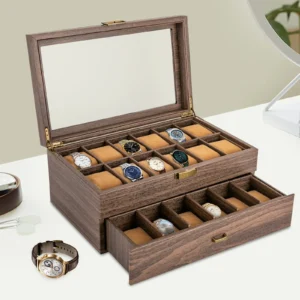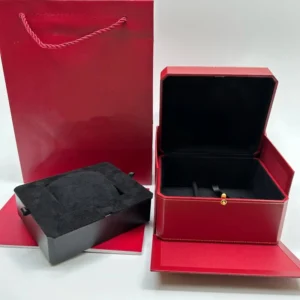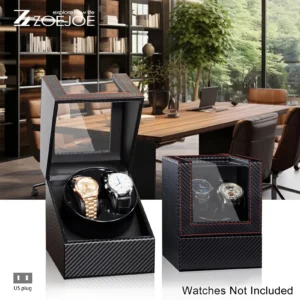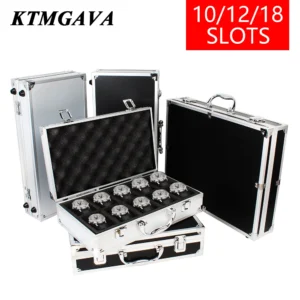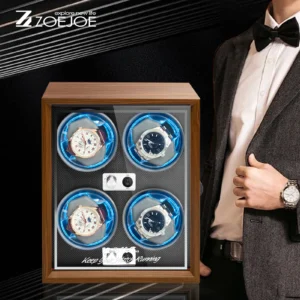Why Material Selection Matters for Luxury Watch Storage
The relationship between quality materials and watch preservation goes far deeper than mere aesthetics. Every watch enthusiast understands that proper storage isn’t just about keeping timepieces organized—it’s about protecting valuable investments that often carry both financial and sentimental significance. The materials used in a watch box directly impact how well your collection maintains its condition over time.
When selecting a watch storage solution, material choices reflect both practical needs and personal style preferences. Premium materials don’t just showcase your collection more elegantly; they provide superior protection against elements that can damage delicate watch mechanisms. The right materials create stable environments that shield timepieces from humidity fluctuations, dust accumulation, and unnecessary exposure to light.
Material selection becomes particularly crucial for collectors with higher-end timepieces. Many luxury watch manufacturers invest considerable resources in creating their own storage solutions using specific materials that complement their timepieces—further emphasizing the importance of material quality in proper watch storage.
Key factors that make material selection critical include:
- Protection against environmental damage (humidity, dust, UV exposure)
- Scratch prevention for cases and bracelets
- Stability to prevent movement and potential damage
- Non-reactivity with watch materials to prevent corrosion
- Durability to ensure long-term storage capability
- Aesthetic appeal that complements your collection
Understanding watch collection storage planning principles helps collectors make informed choices about materials that provide both protection and presentation. The investment in quality materials for watch storage directly correlates to the longevity and condition of your timepiece collection.
Premium Woods: Timeless Elegance for Discerning Collectors
Classic and Commonly Used Woods
Wood remains the quintessential material for wooden watch boxes due to its natural beauty, durability, and timeless appeal. Each wood type brings distinctive characteristics that appeal to different collector preferences.
Walnut: Prized for its rich, dark brown tones and striking grain patterns, walnut offers excellent stability and durability. Its natural resistance to warping makes it ideal for maintaining the precise alignments needed in quality watch boxes. The wood develops a deeper patina over time, enhancing its visual appeal.
Cherry: Distinguished by its warm reddish-brown hue that deepens beautifully with age. Cherry provides good workability for detailed craftsmanship while offering moderate density that balances weight and durability. Its fine, straight grain creates a sophisticated appearance that complements both modern and traditional watch styles.
Maple: Known for its light, creamy appearance and subtle grain, maple provides exceptional hardness (1450 on the Janka scale) that resists denting and wear. Its tight grain structure creates a smooth surface ideal for fine finishes. Maple’s lighter tone offers excellent contrast for darker watch faces and straps.
Mahogany: Featuring a reddish-brown color with distinctive straight grain, mahogany has long been associated with premium furniture. Its moderate hardness combined with excellent stability makes it resistant to swelling and shrinking with humidity changes—a crucial characteristic for protecting sensitive timepieces.
Oak: Recognized by its prominent grain pattern and light to medium brown color, oak provides exceptional strength and durability. Its natural resistance to moisture makes it particularly suitable for watch storage in varied environments. Oak’s distinctive grain creates a traditional, substantial appearance that suggests permanence and stability.
Exotic and Specialty Woods
For the most discerning collectors, exotic and specialty woods elevate watch storage into the realm of functional art.
Ebony: Among the hardest and densest woods available, ebony offers an unmistakable deep black color rarely found in natural materials. Its exceptionally fine grain creates a smooth, almost glass-like finish when properly worked. The substantial weight and density of ebony provide both physical and perceived quality that complements high-end timepieces.
Burl Woods: These distinctive woods come from abnormal growths on tree trunks, creating swirling, intricate patterns unlike any other wood. Each burl piece is completely unique, making every watch box a one-of-a-kind creation. Common varieties include walnut burl, maple burl, and amboyna burl—the latter being among the most expensive woods in the world.
Zebrawood: Named for its striking contrast between light and dark stripes, zebrawood creates visually dramatic watch boxes that demand attention. The wood’s interlocked grain provides excellent stability while creating an exotic visual appeal that complements bold watch designs.
Teak: With natural oils that make it exceptionally resistant to moisture and decay, teak has been the preferred wood for marine applications for centuries. These same properties make it excellent for watch storage, particularly in humid environments. Its golden-brown color and straight grain provide a warm, inviting aesthetic.
Wood Selection and Care Considerations
The true quality of a wooden watch box extends beyond the wood species to include several critical factors:
Grain Selection and Direction:
– Quarter-sawn woods offer superior stability and resistance to warping
– Straight grain provides structural integrity for precise lid and drawer alignment
– Figured grain adds visual interest but requires careful selection for structural components
Humidity Considerations:
– Properly kiln-dried woods with 6-8% moisture content minimize future movement
– Woods with natural oils (like teak) offer better resistance to humidity fluctuations
– Avoid boxes made with insufficiently dried wood, which may warp or crack over time
Finishing Options:
– Hand-rubbed oil finishes enhance the natural beauty of wood grain while allowing it to breathe
– Lacquer finishes provide excellent protection but may create a more sealed environment
– Wax finishes offer a natural feel but require more frequent maintenance
– Look for non-toxic finishes that won’t off-gas harmful compounds near your timepieces
Maintenance Requirements:
– Keep wooden watch boxes away from direct sunlight to prevent fading and drying
– Apply appropriate wood conditioners annually to maintain moisture balance
– Use a soft cloth for dusting rather than chemical sprays that can damage finishes
The process of organizing watch collection storage becomes significantly easier when your watch box materials are properly selected and maintained.
Luxurious Leathers: Sophistication With Tactile Appeal
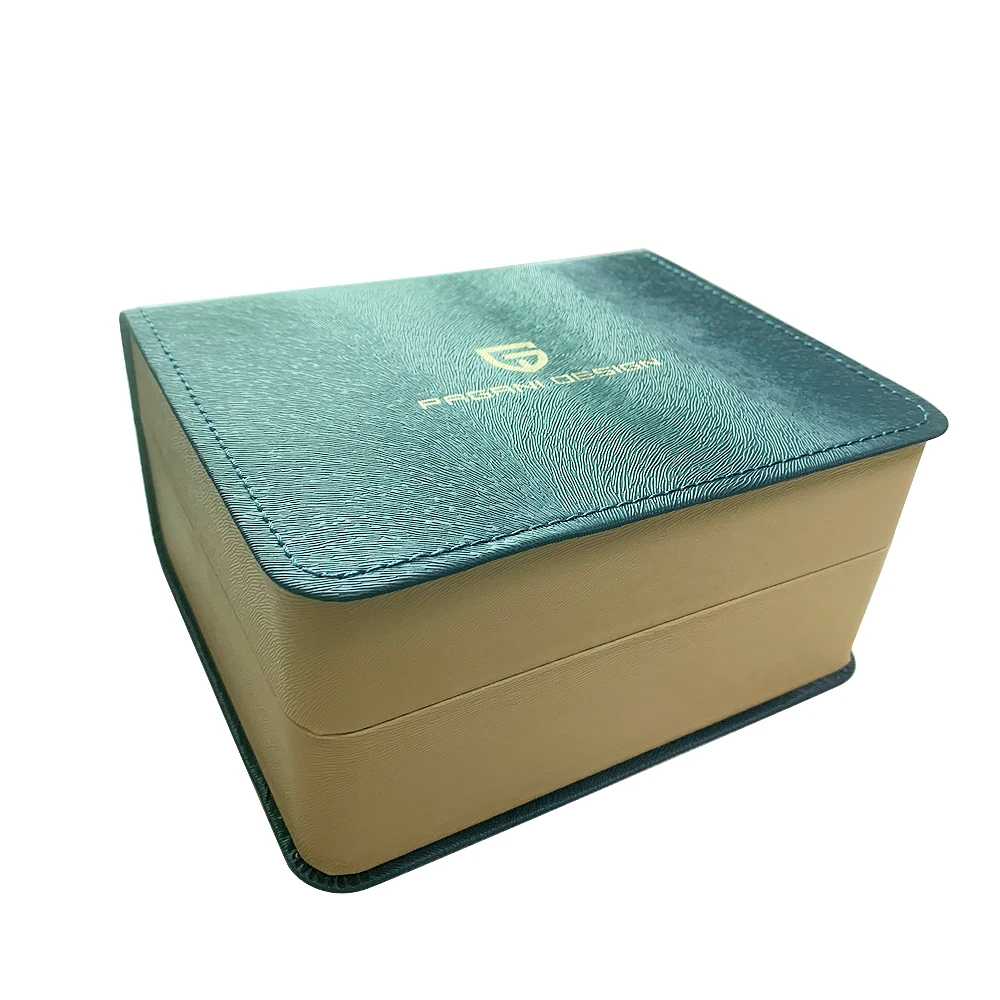
Premium Leather Varieties for Exteriors and Linings
Leather adds a sophisticated, tactile dimension to watch storage solutions, often complementing wooden structures or standing alone as the primary material. The quality of leather used dramatically impacts both aesthetics and functionality.
Full-Grain Leather: Representing the highest quality leather available, full-grain comes from the top layer of the hide and includes the natural grain with all its character marks intact. Its tight fiber structure creates exceptional durability while developing a beautiful patina over time. Watch boxes featuring full-grain leather exteriors often command premium prices but offer unmatched longevity and character.
Top-Grain Leather: Slightly more refined than full-grain, top-grain leather has had the uppermost surface lightly sanded to remove imperfections. This creates a more uniform appearance while maintaining good durability. It’s commonly used in high-quality leather watch boxes that balance refined aesthetics with longevity.
Suede: Created from the underside of the hide, suede offers a soft, napped texture that’s particularly suitable for interior lining applications. Its gentle surface protects watch cases and bracelets from scratches while providing a luxurious feel. However, suede requires more careful maintenance to prevent staining or matting.
Genuine Leather vs. Bonded Leather: Watch collectors should be wary of boxes labeled only as “genuine leather” (which ironically indicates lower quality) or “bonded leather” (essentially leather particles glued together). These materials lack durability and may deteriorate relatively quickly, potentially damaging watches through chemical transfer or particle shedding.
Exotic Leathers for Ultimate Luxury
For the ultimate expression of luxury, exotic leathers offer distinctive textures and exclusive appeal.
Alligator/Crocodile: Characterized by their distinctive scale pattern and incredible durability, these leathers represent the pinnacle of luxury. The large, symmetrical scales create an unmistakable visual texture that projects sophistication and exclusivity. Watch boxes featuring genuine alligator typically target the most discerning collectors.
Ostrich: Immediately recognizable by its distinctive quill pattern, ostrich leather combines visual interest with remarkable durability. The natural oils in ostrich skin make it resistant to drying or cracking, while the unique texture adds character to watch box designs.
Shagreen: Traditionally made from ray or shark skin, authentic shagreen features a naturally textured surface with a distinctive granular pattern. Historically used in luxury products for royalty, modern shagreen (often made from stingray) creates watch boxes with both historical significance and visual intrigue.
Leather Performance and Craftsmanship Factors
To evaluate leather quality in watch boxes, consider these important factors:
- Aging Characteristics: Quality leathers develop attractive patinas rather than showing wear
- Edge Finishing: Well-crafted leather boxes feature burnished or painted edges rather than raw cuts
- Stitching Quality: Even, tight stitching with appropriate thread thickness indicates quality craftsmanship
- Dye Penetration: Premium leathers show consistent color throughout the cross-section, not just surface dye
- Aroma: Quality leather has a natural, pleasant scent without chemical overtones
- Moisture Resistance: Better leathers include treatments to resist humidity while remaining breathable
Modern Materials: Contemporary Aesthetics with Advanced Protection
Carbon Fiber and Composites
The watch industry has embraced modern materials that offer exceptional performance characteristics while creating distinctive contemporary aesthetics. Carbon fiber represents one of the most technologically advanced options for premium watch storage.
Carbon fiber’s exceptional strength-to-weight ratio makes it ideal for travel watch cases and storage solutions that need to be both protective and portable. The material is created by weaving carbon filaments into a pattern, then binding them with resin under heat and pressure. This process creates a material that’s stronger than steel while weighing significantly less.
The visual characteristics of carbon fiber are equally impressive. Different weave patterns—from plain weave to twill to herringbone—create distinctive appearances that appeal to collectors who appreciate technical materials and modern design. The glossy, geometric precision of carbon fiber complements sports watches and modern chronographs particularly well.
Quality differences in carbon fiber watch boxes often come down to:
- Weave consistency and precision
- Resin quality and clarity
- Edge finishing to prevent fraying or splintering
- Integration with other materials at junction points
The remarkable stability of carbon fiber in different temperature environments makes it particularly suitable for carbon fiber metal watch boxes designed for travel or display in varying conditions.
Metals and Hardware Elements
While rarely used as the primary material for entire watch boxes, metals play crucial roles in functionality, durability, and aesthetic accents.
Stainless Steel: The preferred metal for hinges, clasps, and structural components due to its corrosion resistance and strength. Quality watch boxes utilize 304 or 316 stainless steel for hardware that maintains smooth operation over years of use. Brushed stainless accents also add contemporary visual elements that complement modern watch designs.
Brass and Bronze: Often used for decorative elements, these metals develop distinctive patinas over time that add character. The warm golden tones of brass or the deeper, reddish hues of bronze provide attractive contrast with both wood and leather. Quality brass components typically feature lacquer coatings to prevent tarnishing near watches.
Aluminum: When weight is a primary concern, aluminum components offer excellent strength while minimizing bulk. Anodized aluminum provides corrosion resistance while allowing for various color treatments that can accent watch box designs.
Precious Metals: At the highest end of the market, accents in sterling silver, gold plating, or even solid gold elevate watch boxes into luxury art pieces. These elements typically appear as corner protectors, nameplates, or inlaid designs rather than structural components.
Glass and Transparent Elements
The ability to view a collection without opening the box has made transparent elements increasingly popular in watch storage design.
Tempered Glass: Offering significantly higher impact resistance than standard glass, tempered varieties provide safe viewing windows that resist breakage. Quality watch boxes use glass with 3-5mm thickness to ensure adequate strength while maintaining clarity.
Sapphire Crystal: Found in the most exclusive watch boxes, sapphire crystal offers extraordinary scratch resistance (second only to diamond) and exceptional clarity. The same material used in luxury watch faces provides uncompromising protection when used in display lids.
Acrylic Alternatives: Modern acrylics provide glass-like clarity with reduced weight and greater impact resistance. High-grade cast acrylic offers 10-17 times the impact resistance of glass, making it ideal for watch display case designs that prioritize safety.
UV Protection: Premium transparent materials often include UV filtering capabilities that protect watches from light damage. This feature proves particularly important for preserving vintage timepieces with sensitive dials or for collections displayed near windows.
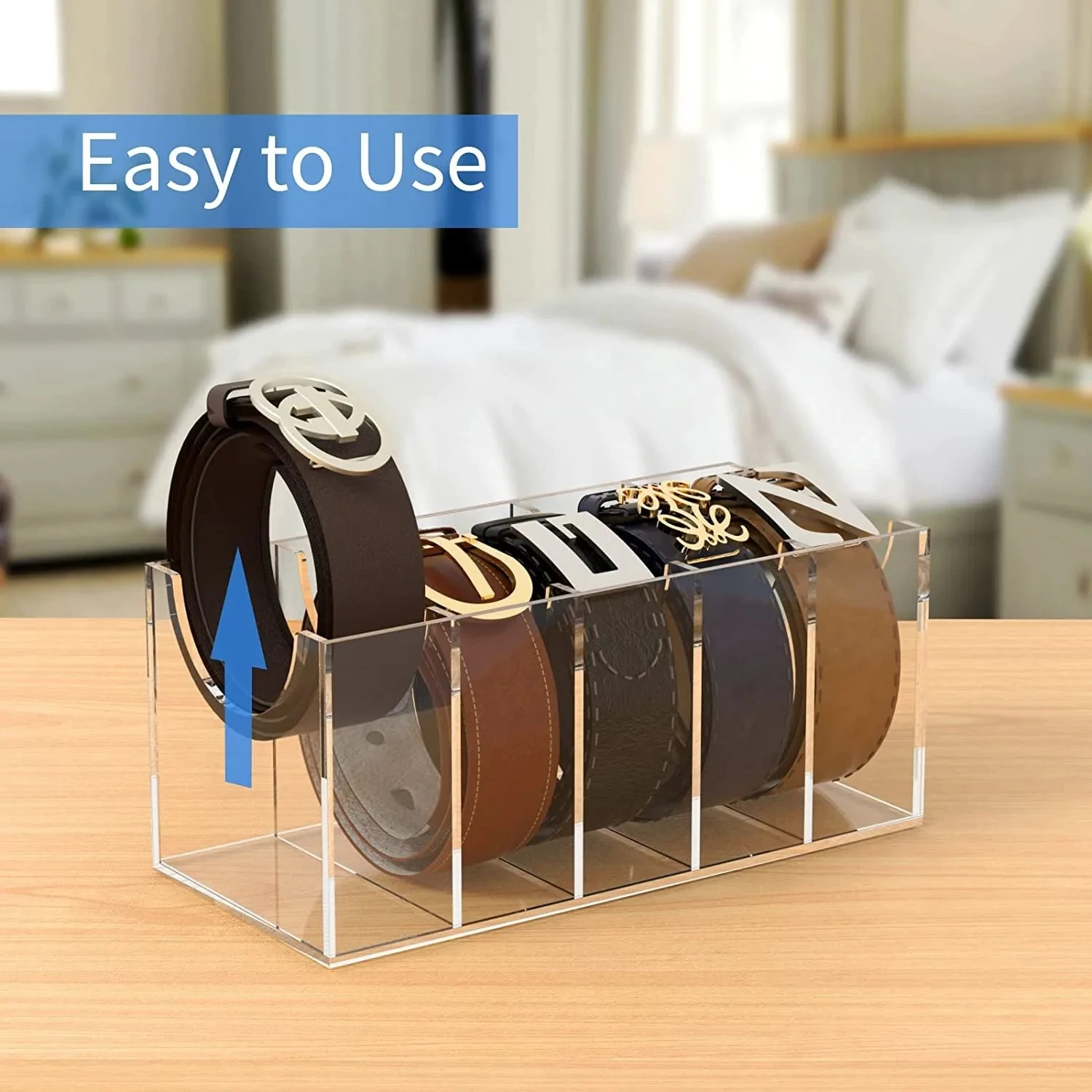
Essential Interior Materials: The Hidden Protectors
Protective Fabric Linings
While exterior materials create visual impact, the interior lining materials have the most direct contact with your timepieces. These hidden protectors play a crucial role in preventing scratches and maintaining watch condition.
Velvet: The classic choice for premium watch box interiors, velvet provides a soft, plush surface that cushions watches while preventing scratches. Quality differences in velvet linings become apparent in:
- Pile density (higher density offers better protection)
- Pile direction consistency (should be uniform throughout)
- Backing attachment (properly secured to prevent bunching or separation)
- Colorfast properties (shouldn’t transfer dye to watch straps)
Suede: With its distinctive napped texture, suede offers excellent scratch protection with a slightly more rugged aesthetic than velvet. Natural suedes provide excellent breathability but require more maintenance, while synthetic suedes offer improved stain resistance with similar protective qualities.
Microfiber: This modern synthetic option provides outstanding scratch protection due to its incredibly fine fibers. Quality microfiber linings offer excellent softness while wicking away any moisture that might collect on watches during handling. Their durability and resistance to crushing makes them ideal for frequently accessed collections.
Alcantara: This premium synthetic material combines the aesthetic appeal of suede with enhanced durability and stain resistance. Its remarkable softness and consistency make it a preferred lining in high-end watch box lining materials comparison studies, though it commands a significant price premium.
Silk and Satin: Reserved primarily for the most luxurious presentation boxes, silk provides unmatched softness and a distinctive luster. However, pure silk requires careful humidity control to prevent deterioration, making silk-blend fabrics more practical for long-term storage applications.
Cushioning and Support Structures
The components that actually hold watches in place require careful material selection to provide security without risking damage.
Memory Foam: High-density memory foam cushions conform to watch shapes, providing custom-fitting support that minimizes movement. Quality implementations use non-outgassing foams that won’t release chemicals that could potentially affect watch components over time.
Structured Pillows: Specially designed watch pillows combine firm cores with softer exteriors to maintain shape while providing gentle support. The best designs accommodate various watch sizes through slight compression rather than forcing watches onto rigid forms.
Spring-Loaded Mechanisms: More sophisticated watch boxes incorporate spring-tension holders that adjust to different watch sizes automatically. These systems require precise engineering using non-corrosive metals and careful fabric covering to prevent direct metal contact with watches.
Specialized Bracelet Supports: Watch boxes designed specifically for bracelet watches include longer, contoured supports that maintain the natural curve of metal bracelets to prevent stress on links and clasps.
Luxury Watch Boxes, Men's Watch Boxes, Single Watch Box
Price range: $903.35 through $980.97 Select options This product has multiple variants. The options may be chosen on the product pageMen's Watch Organizer, Watch Display Case, Watch Organizer
Price range: $112.68 through $169.45 Select options This product has multiple variants. The options may be chosen on the product pageLuxury Watch Boxes, Luxury Watch Travel Case
Price range: $200.33 through $224.57 Select options This product has multiple variants. The options may be chosen on the product pageAutomatic Watch Winder, Double Watch Winder, Leather Watch Boxes
$147.60 Select options This product has multiple variants. The options may be chosen on the product page12 Watch Box, Watch Display Case, Watch Organizer
Price range: $101.20 through $141.30 Select options This product has multiple variants. The options may be chosen on the product page4 Watch Winder, Automatic Watch Winder, Watch Display Case
$391.75 Select options This product has multiple variants. The options may be chosen on the product page
Material Combinations: The Art of Harmonious Design
The most sophisticated watch boxes leverage thoughtful combinations of materials to achieve both functional excellence and visual harmony. These combinations often reflect traditional craftsmanship methods while incorporating modern materials where they provide practical benefits.
Classic pairings that have stood the test of time include:
Wood and Leather: Perhaps the most enduring combination, wooden boxes with leather accents or linings unite the structural stability of hardwood with the soft protection of quality leather. Walnut exteriors with cognac leather interiors create particularly sophisticated harmony through complementary warm tones.
Wood and Glass: The transparent practicality of glass display tops pairs naturally with wooden box construction. This combination satisfies both protection and presentation needs, allowing visual appreciation without handling. The natural warmth of wood frames the mechanical precision of watches visible through glass.
Leather and Metal: Leather-wrapped exteriors with discreet metal hardware create sophisticated, portable storage options. The contrast between soft, yielding leather and precisely engineered metal clasps reflects the same design principles found in many luxury timepieces themselves.
Carbon Fiber and Leather: This contemporary pairing combines technical modernity with traditional luxury. The high-tech appearance of carbon fiber exteriors transitions surprisingly well to soft leather interiors, creating watch storage that appeals to collectors of modern sport watches and complex chronographs.
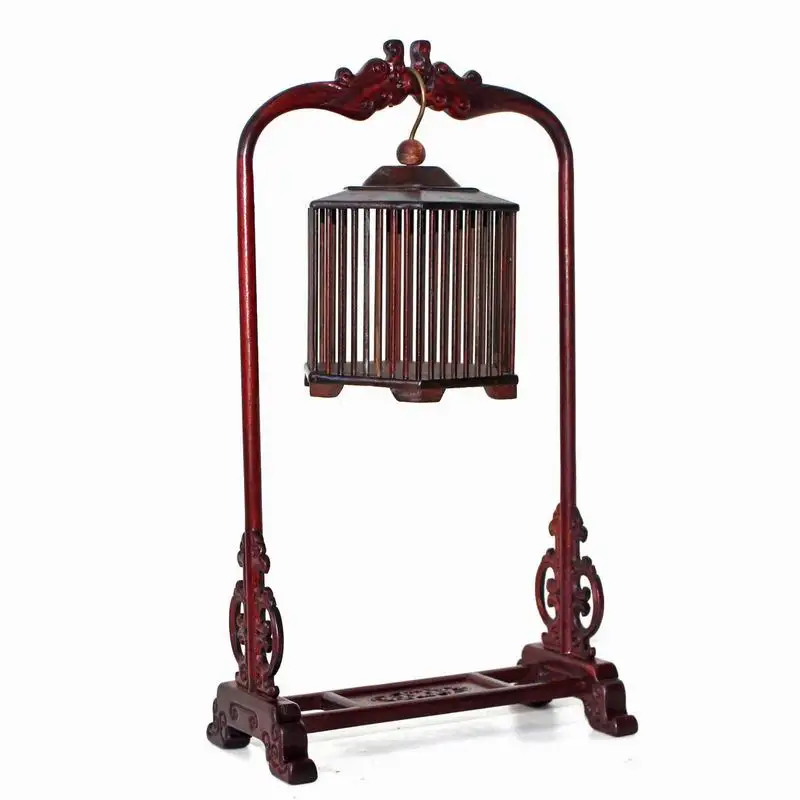
The most successful material combinations in watch boxes achieve visual balance while ensuring that each material serves a specific purpose. Hardware elements should complement rather than compete with primary materials, while interior materials prioritize protection without compromising the box’s overall aesthetic vision. Creating effective luxury watch storage setup environments requires thoughtful consideration of these material relationships.
Selecting the Perfect Materials for Your Collection
Choosing the right materials for your watch storage requires aligning your specific collection needs with the properties each material offers. Consider these key factors when making your selection:
Collection Type Considerations:
– Vintage watches often benefit from natural materials that allow minimal air circulation while blocking light
– Sports watches with higher water resistance may tolerate a wider range of storage environments
– Dress watches with polished cases and bracelets require particularly soft, non-abrasive interior materials
Environmental Factors:
– Collectors in humid environments should prioritize materials with natural moisture resistance
– Those in very dry climates might avoid woods that could become brittle without adequate humidity
– Locations with temperature fluctuations benefit from materials with thermal stability
Display vs. Protection Priority:
– Collections meant primarily for display benefit from quality glass or sapphire crystal elements
– Watches stored for long-term preservation may prioritize fully enclosed designs with superior sealing
– Regular-wear rotations need materials that withstand frequent opening and closing
When evaluating quality, examine these critical junctions where craftsmanship becomes most apparent:
– Corners and edges where different materials meet
– Hinge attachment points that bear mechanical stress
– Interior transitions between different lining materials
– Cushion attachment methods and security
For specialized collections, material selection becomes even more important. Implementing thoughtful watch storage ideas collectors use requires matching materials to specific timepiece needs. Mechanical watches, for instance, benefit from storage materials that help maintain consistent humidity levels, while quartz watches may prioritize dust protection above other considerations.
Sustainable and Ethical Material Considerations
As environmental awareness grows, many collectors now consider sustainability alongside luxury when selecting watch storage. Fortunately, responsible material sourcing and ethical production can complement rather than compromise quality.
Sustainable Wood Sourcing:
– Look for FSC (Forest Stewardship Council) certification ensuring responsible forest management
– Consider woods from managed plantations rather than old-growth forests
– Reclaimed and repurposed woods offer unique character while reducing environmental impact
Ethical Leather Alternatives:
– Vegetable-tanned leathers use natural materials rather than chrome chemicals
– By-product leathers utilize hides from food industry rather than dedicated sourcing
– High-quality synthetic alternatives increasingly offer comparable aesthetics with reduced environmental impact
Innovative Sustainable Materials:
– Cork provides natural water resistance and unique visual texture from renewable sources
– Engineered composites using agricultural waste create stable, consistent materials
– Recycled metals reduce environmental impact without compromising quality
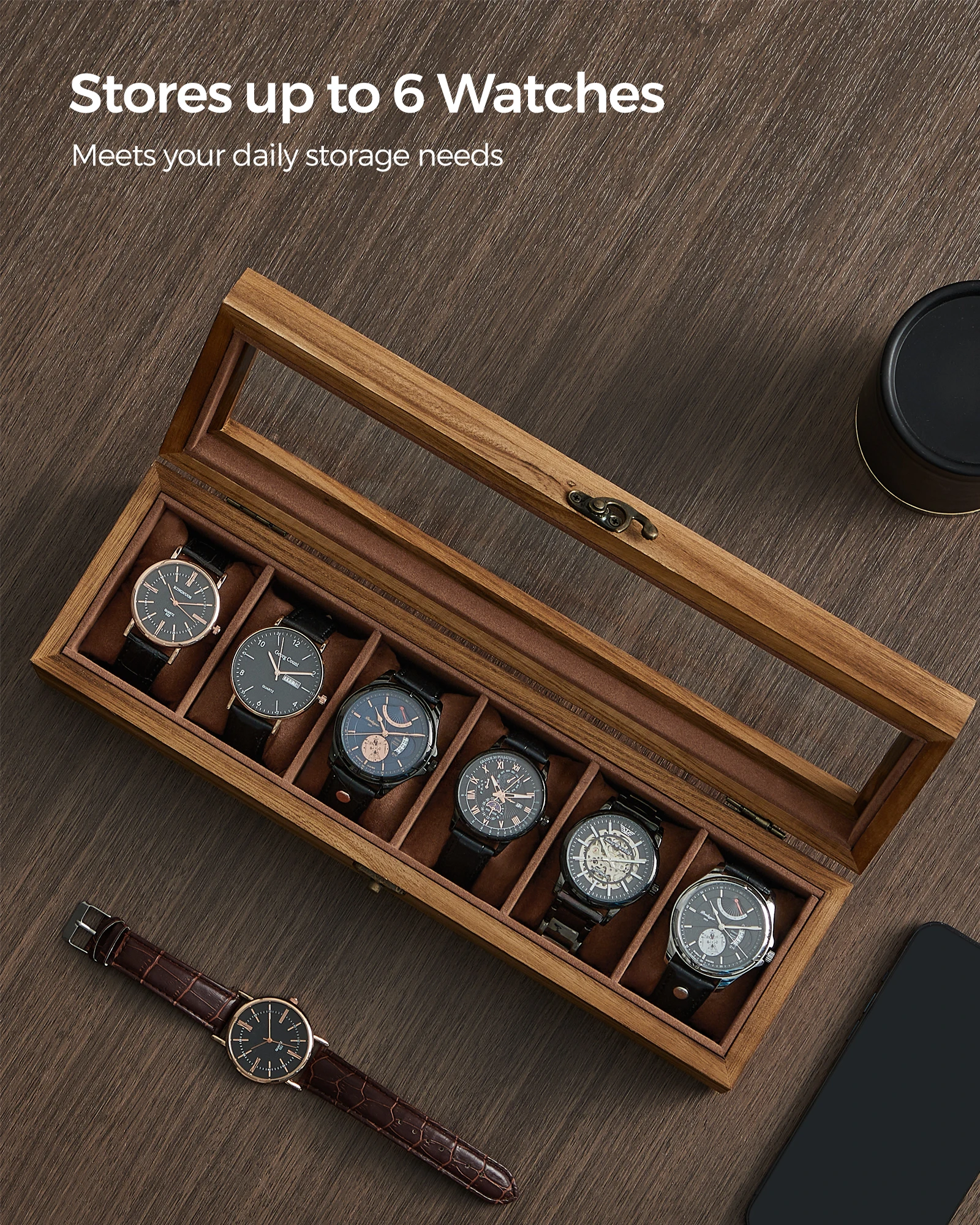
The growing market for sustainable luxury has inspired innovative approaches to traditional craftsmanship. Many premium manufacturers now offer options that maintain exceptional quality while addressing environmental concerns. Daily Accents considers these factors when selecting materials for their premium watch storage solutions, understanding that responsible sourcing reflects the same care and attention to detail that collectors apply to their timepiece selections.
When evaluating sustainable options, look beyond simple marketing claims to verifiable certifications and transparent sourcing information. True sustainability in luxury products means materials that not only minimize environmental impact but also create products durable enough to become heirlooms rather than disposable items—a perfect complement to the timepieces they protect.



